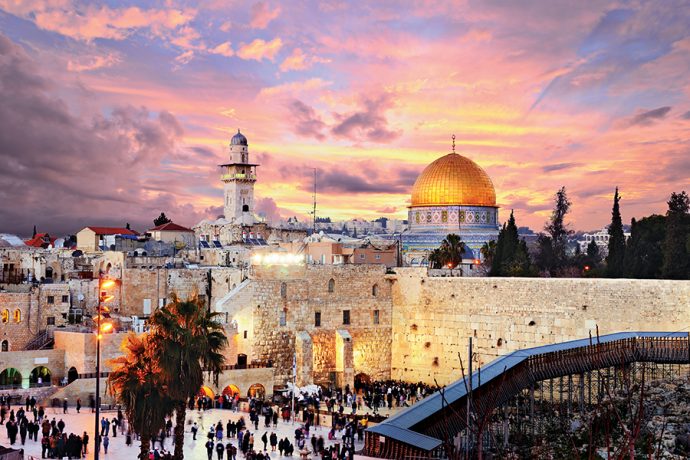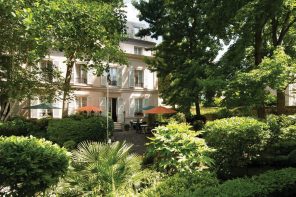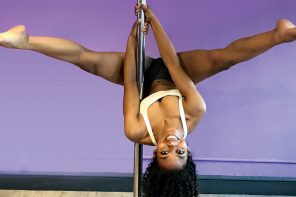Many people spend their vacations at the beach or touring glamorous sites.
Sheila and Bob Friedland spent part of theirs delving into one of the most nettlesome geopolitical issues of the day.
During a recent trip to Israel, the White Plains couple recently spent four days on a listening tour in the West Bank, absorbing the Palestinian perspective on the Israeli-Palestinian conflict. The tour was sponsored by Encounter, a nonpartisan educational organization based in New York City and dedicated to peace and human dignity that seeks to cultivate an informed Jewish leadership on the subject of the Israeli-Palestinian conflict through an understanding of various perspectives. Encounter focuses on American Jewish leadership, and most of the approximately 30 people on the tour were rabbis and other religious leaders as well as educators. The Friedlands were the only lay couple. He has several companies — Westrock Development, a real estate firm; Shleppers Moving & Storage; and Sensible Auto Lending. She is a social activist, particularly in regard to issues affecting girls and women, who oversees the family’s philanthropic activities and also lectures on the relationship of art and Jewish history.
What drew them to Encounter? “I would say for me curiosity,” Sheila says. “We talk about the Palestinians all the time. But we don’t get to see and meet them on their own terms and hear their stories.”
Adds Bob: “There are three sides to any situation — your side, my side and the truth.”
Traveling by bus, the Encounter group spent two days in Bethlehem, one in East Jerusalem and one in Ramallah, the de facto administrative capital of the Palestinian National Authority. (The group was accompanied by a Palestinian security team that made them feel “totally safe,” Sheila says.) What she and Bob discovered was that there is a complex situation tinged with both despair and hope.
“(The Palestinians) have a high unemployment rate, extraordinarily high, which is apparent when you see people walking around during the day,” Bob says. They blame this in part on the West Bank wall, the 440-mile barrier that the Israelis built at the turn of the 21st century as a deterrent to the wave of suicide bombings that characterized the Second Intifada, or uprising. The Palestinians see the wall as a symbol of apartheid designed to deny their political and socioeconomic sovereignty. “They do not accept any responsibility for the wall being built and that was disheartening to us,” Bob says.
But responsibility is not one-sided, he adds. As a developer, he was disturbed by an experience in a village the group visited in Area C, which is controlled by the Israelis.
“The mayor of the village complained that they had applied for a building permit beginning 12 years ago and have been denied it every time,” Bob says. “But the Israelis are building all around them. This was a village of 650 families and, if someone got married, because they couldn’t build, there was no room for them to live there.”
Both Bob and Sheila stress their love for Israel. But, Bob adds, “We as a group were shocked by the restrictions placed on the Palestinians by Israel.”
He keeps coming back to three words that characterize what the Palestinians expressed — “despair, indignity, hopelessness.” Bob has a friend who lives in Ramallah whose son just graduated from college but is not looking too much toward the future. “The Palestinians say they are living just for today,” Bob adds. “They don’t know if there will be a tomorrow.”
And yet, Sheila says, “There are pockets of hope….Ramallah and Bethlehem are thriving, vibrant cities — the foods, the smells of baked goods, the vegetable markets, girls in fashionably skinny jeans. Life goes on.”
More important, she says, are the “terrific people” they met who want to live side by side with the Israelis in peace; who understand the modern state of Israel in the context of the Diaspora and the Holocaust; who see their own situation in the cultural-historical light of centuries of empires and conquests; and who now look to nonviolent agents of change — Mahatma Gandhi, the Rev. Dr. Martin Luther King Jr. and Nelson Mandela — as role models. These include the director of the Alrowwad cultural center in Bethlehem’s Aida refugee camp, which seeks change through creative, nonviolent means.
“It’s a situation of enormous complexity,” Sheila says of the Israeli-Palestinian conflict, “that isn’t going to be solved by us. The two parties are going to have to figure it out.”
And yet, listening to the Friedlands talk, you can’t help but think that such “encounters” are among Sheila’s “pockets of hope.”
For more, visit encounterprograms.org.





